Marshal Alexander Mikhailovich Vasilevsky
The future marshal was born 16 September 1895 of the year (old style), but he himself always believed that 17 was born September on the same day as his mother. This date of birth is “fixed” in his memoirs “A Matter of Life”, as well as in the dates of awarding jubilee post-war awards, which were given for his birthday. Alexander Vasilevsky was born in the village of Novaya Golchikha, Kineshma District (today part of the city of Vichuga, Ivanovo Region) into a family of a Russian Orthodox priest. His father, Mikhail Alexandrovich Vasilevsky, was the church's regent and psalm-reader of St. Nicholas's Co-Orthodox Church; his mother, Nadezhda Ivanovna Vasilevskaya, was the daughter of the psalm-reader of the village of Uglets, Kineshma District. The family was large, Alexander was the fourth oldest child.
In 1897, the Vasilevsky family moved to the village of Novopokrovskoye, in which the father of the future marshal began to serve as a priest in the newly built stone Ascension Church of the same faith. Later, Alexander will begin his studies in the parish school at this temple. In 1909, he graduated from the Kineshma Theological School and entered the Kostroma Theological Seminary, the diploma of which allowed him to continue his education in secular educational institutions. During his years of study at the seminary, he took part in the All-Russian seminary strike, which was a protest against the ban on their entry to institutes and universities. For his participation in the strike, he was expelled from Kostroma by the authorities, but later a few months later returned back after partially meeting the demands of the seminarians.
His fate was seriously influenced by the First World War, which helped him to decide on his life path. Before the start of the last class in the seminary, he and several of his classmates on the wave of patriotic feelings externally passed exams, in February 1915, Alexander Vasilevsky entered the Alekseevskoe Military School. Here he completed an accelerated training course (4 of the month) and at the end of May 1915, with the rank of ensign was sent to the front.
From June to September, 1915 managed to visit a number of spare parts, finally finding himself on the South-Western Front, taking up the post of half-commander of a company of 409-th Novokhopersky regiment of 103-th Infantry Division of the 9-th army. In the spring of 1916, he was appointed commander of the company, which some time later was recognized as one of the best in the whole regiment. In late April, he received his first award Order of St. Anne 4-th degree with the inscription "For courage", was later awarded the Order of St. Stanislav 3-th degree with swords and bow. With his company in May, 1916 took part in the famous Brusilovsky breakthrough. As a result of heavy losses of officers, he temporarily commanded a battalion in his regiment. For the bravery shown in battles he received the rank of captain ahead of schedule. Vasilevsky was a brave commander who encouraged the soldiers not only with words, but also with personal courage and courage, not infrequently dragging them along during the attacks.
The news of the October Revolution caught Vasilevsky under Adjud-Nou in Romania, where he decides to leave military service, in November 1917, he retires and returns to his homeland. Until June, 1918 lived with his parents and was engaged in agriculture; from June to August, 1918 worked as a hundred-year-old instructor of universal education in the Ugletskaya volost of the Kineshma district of the Kostroma province. Since September, 1918 worked as a teacher in elementary schools in the villages of Verkhovye and Podyakovlevo, Golunsky volost, Novosilsky district, in the territory of the Tula province.
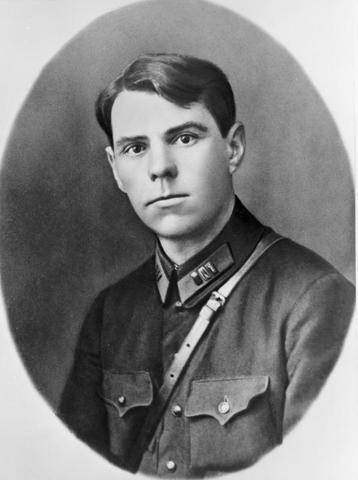
Already in April 1919, military service returned to the life of Alexander Vasilevsky, he was called up to the Red Army and sent to the 4-th reserve battalion as a platoon instructor (assistant platoon commander). A month later, he was sent as a squad commander from 100 people to the Stupino parish of the Efremov district of the Tula province to assist in the fight against gangs and the implementation of surplus. He took part in the preparation of fortified areas located to the south-west of Tula, before the offensive of the white army of Anton Denikin. In 1920, he was the assistant commander of the regiment of the 96 th rifle division of the 15 th army during the Soviet-Polish war. In 1920, he participated in the fight against banditry in Smolensk Province, commanded three different regiments of the 48 Tver Infantry Division, headed the divisional school for junior commanders, and was trained in shooting tactical courses for improving the commanding personnel of the Red Army "Vystrel". In June, the 1928 of the year, his 143 regiment was highlighted by the inspection team at the exercise. In the autumn of 1930, the 144-th regiment, which, prior to being appointed as commander of Vasilevsky, was considered the least prepared in the 48-division, managed to take first place and received an excellent mark on district maneuvers.
Successes Vasilevsky and his talents were noticed, which probably led to his transfer to staff work, as reported by V. K. Triandafill immediately after the completion of the maneuvers. We can say that his career developed successfully and went uphill. Neither his origin nor his service in the tsarist army prevented this. True, for a long time he was not accepted into the party. For a long time he was a candidate member of the party, being accepted into the ranks of the Communist Party only in 1938, already during his service in the General Staff. In his autobiography, Alexander Vasilevsky wrote that he had lost his written and personal connection with his parents from the year 1924, having restored relations with them only in the year 1940, at Stalin’s personal proposal.
From May 1931, Alexander Vasilevsky worked in the Red Army Training Directorate, in 1934-1936 he was the head of the combat training department of the Volga Military District. In 1936, after the introduction of personal military ranks in the Red Army, he was given the rank of colonel. In November, 1936 was enrolled at the Military Academy of the General Staff, hitting the first set of students consisting of 137 people. He graduated with honors and in 1937, he was appointed Head of the Department of Logistics of the Academy. In October, the 1937 of the year was followed by a new appointment - as Chief of the 10 Division (operational training of commanders) of the 1 Division of the General Staff. 16 August 1938, the next military rank - commander. By May 1940, Vasilevsky becomes the first deputy head of the Operations Directorate with assignment of the rank of division commander. He was directly involved in the development of operational plans for the strategic deployment of parts of the Red Army in the north, north-west and west in the event of war with Germany.
Alexander Vasilevsky was a participant of the Great Patriotic War from the first day, it was the war that revealed the outstanding qualities and skills of the commander. By 1 August 1941, Major General Vasilevsky was appointed Deputy Chief of the General Staff - Head of the Operations Directorate. During the Battle of Moscow from 5 to 10 in October 1941, Vasilevsky was a member of the GKO group of representatives who ensured the speedy dispatch of retreating and retreating troops to the Mozhaisk defensive line. October 28 activity of this operational group was very highly appreciated by Stalin, Vasilevsky received an extraordinary rank, becoming a lieutenant general.
From 29 in November to 10 in December 1941, due to the illness of the Chief of the General Staff Shaposhnikov Vasilevsky temporarily performed his duties, therefore the whole burden of preparing a counter-offensive near Moscow fell on his shoulders. In general, he played a huge role in organizing the defense of the capital and planning the subsequent counterattack. On the most critical days of the city’s defense, from October 16 to the end of November, when the General Staff was evacuated from Moscow, Alexander Vasilevsky headed the task force in Moscow (the first echelon of the General Staff) to service Headquarters. During the war, especially in the first most difficult time, Vasilevsky literally lived at work. According to the memoirs of his son Igor Vasilevsky, who was 1941 years old in 6, after the start of the war, he had not seen his father at home for a very long time. The General Staff worked around the clock, even putting beds in the building.
26 April 1942, Vasilevsky was promoted to the rank of colonel general. 26 June he was appointed head of the General Staff, and from October 14 at the same time Deputy Commissar of Defense of the USSR. From July 23 to August 26 Vasilevsky was the representative of the Headquarters at the Stalingrad Front. He made a great contribution to the development of Soviet military art, planned and prepared a counterattack of the Soviet troops at Stalingrad, and coordinated it. In January, 1943 - coordinated the offensive of the Voronezh and Bryansk fronts on the Upper Don.
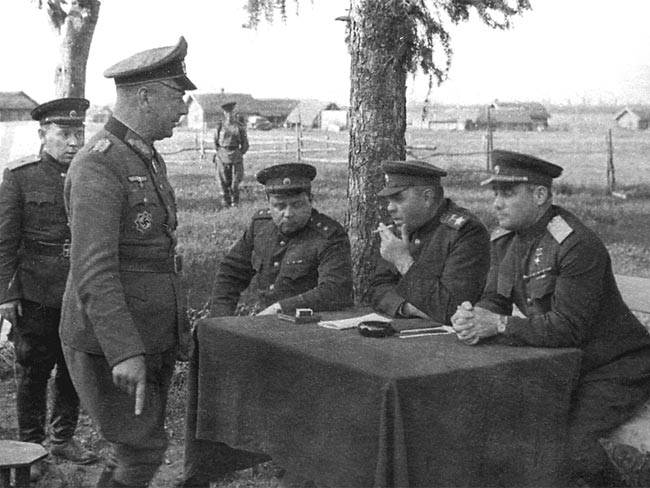
16 February 1943 Alexander Mikhailovich was awarded the title of Marshal of the Soviet Union, his military career reached its peak. The assignment of a new rank was very unusual, since it was only 29 days before that he was given the rank of army general. On behalf of the Supreme Command Headquarters, Alexander Vasilevsky coordinated the actions of the Steppe and Voronezh fronts in the Battle of Kursk, led the planning and conduct of operations to liberate Donbass, as well as operations to liberate right-bank Ukraine and Crimea from the Nazi invaders.
10 April 1944, on the day of liberation of Odessa from the enemy, Vasilevsky was awarded the Order "Victory". This was the second order since the establishment of this award. The first owner of the order was Marshal Zhukov, the third - Stalin. The Victory Order was considered the main military award of the Soviet Union, it was awarded for the successful conduct of military operations on a scale of one or several fronts, they were awarded 17 Soviet commanders, and only three received it twice - Zhukov, Vasilevsky and Stalin. After the liberation of Sevastopol in May 1944, Vasilevsky was slightly injured, his staff car hit a mine, fortunately for him everything was limited to a few days of bed rest.
During the Belarussian offensive operation Bagration, Alexander Vasilevsky coordinated the hostilities of the 1st Baltic and 3rd Belorussian fronts, and on July 10, 1944, the 2nd Baltic front was added to them. The second order of "Victory" Marshal received for the development and management of the operation to capture Koenigsberg in 1945. Then, already at the very end of World War II, he successfully carried out the Zemland operation, in which the troops of the 3rd Belorussian Front in cooperation with the Baltic fleet were able to defeat the Zemland group of German troops located in East Prussia. By the end of April 25, 1945, the troops of the front took possession of the fortified city of Pillau.
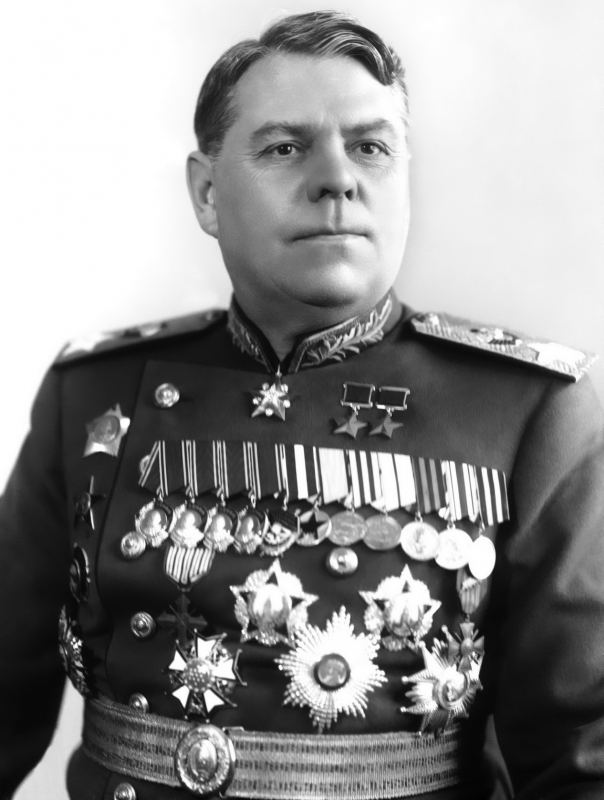
No sooner had the volleys of the war ended in Europe died down, and Alexander Mikhailovich was already on his way to the Far East. He joined the development of the 27 war plan on April 1945 of the year immediately after the end of the East Prussian operation, while he had drafted a draft outline of the plan in the autumn of 1944. Under his direct leadership for the June 27 of 1945, the plan of the Manchurian strategic offensive was prepared. And on July 5, 1945, disguised as Colonel-General with documents addressed to Vasilyev, he arrived in Chita, where on July 30 was appointed commander-in-chief of Soviet forces in the Far East. 9 August 1945, the Soviet troops launched an offensive and defeated the millionth Kwantung Army in Japan in just a few 24 days. For the able leadership of Soviet troops in the Far East during the war with Japan, Vasilevsky was awarded the second Gold Star medal. The first medal and the title of Hero of the Soviet Union, he received another 29 July 1944 of the year for the exemplary performance of the tasks of the Supreme Command, so were his achievements in operations to liberate Belarus and the Baltic States.
After the end of the war, Vasilevsky continued to head the General Staff until 1948, and then held key positions in the Ministry of the Armed Forces of the Soviet Union (From March 24 1949 to February 26 February 1950 - USSR Minister of the Armed Forces, then USSR Military Minister March 16 March 1953). In this case, the fate of Marshal was reflected in the death of Stalin and the subsequent exposure of his personality cult. Between March 16 1953 and March 15 1956, Vasilevsky was the First Deputy Minister of Defense of the USSR until he was relieved of his post at his own request. It is believed that Khrushchev personally sought his resignation. 14 August 1956 of the year Vasilevsky becomes Deputy Minister of Defense of the USSR for military science, and since December 1957 he has been dismissed due to illness with the right to wear a military uniform, the marshal had a heart attack. The retirement allowed him to focus on writing memoirs, as well as work in veterans' organizations.
The celebrated marshal died 40 years ago - 5 December 1977 of the year, not recovering from another heart attack, at that time he was 82 of the year. The urn with the ashes of Alexander Mikhailovich Vasilevsky was walled up in the Kremlin wall on Red Square. The memory of the marshal was immortalized, the streets in many cities of the Russian Federation were named after him, the Military Academy of military air defense of the Armed Forces of the Russian Federation in Smolensk, as well as the Marshal Vasilevsky peak and the Marshal Vasilevsky glacier in the Pamirs are named after him.
Based on materials from open sources
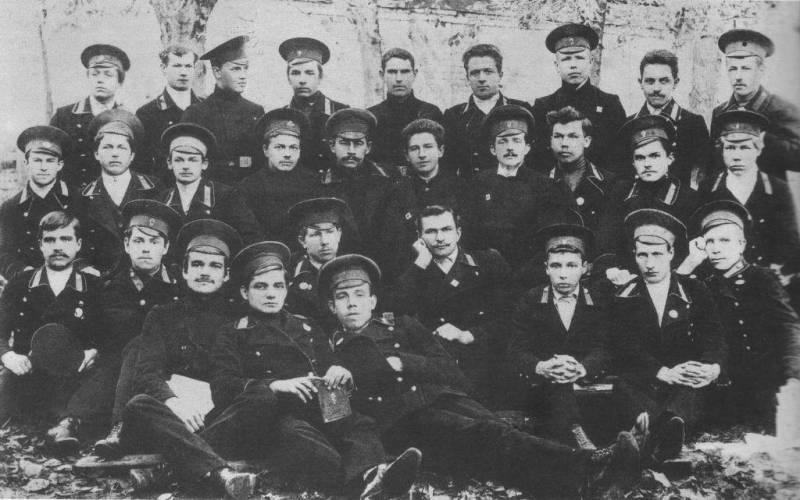
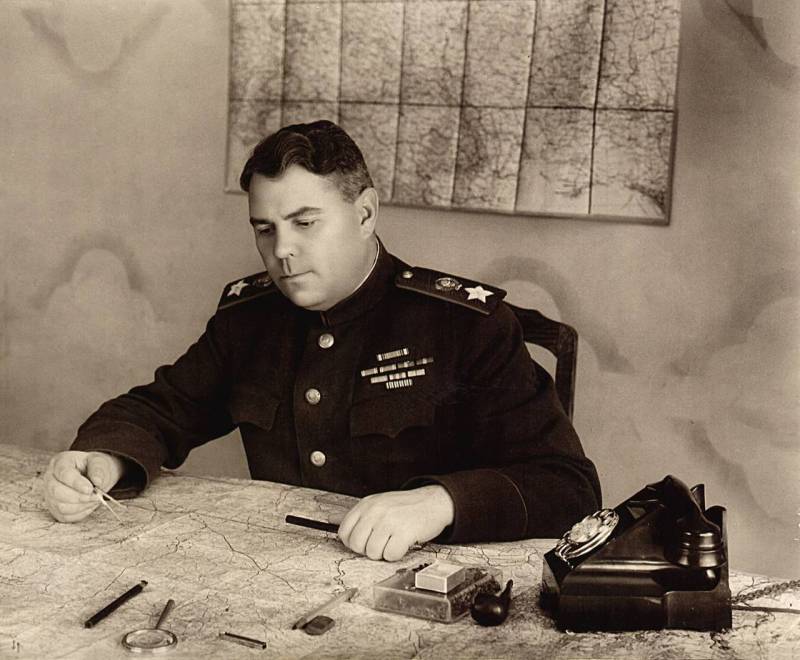
Information